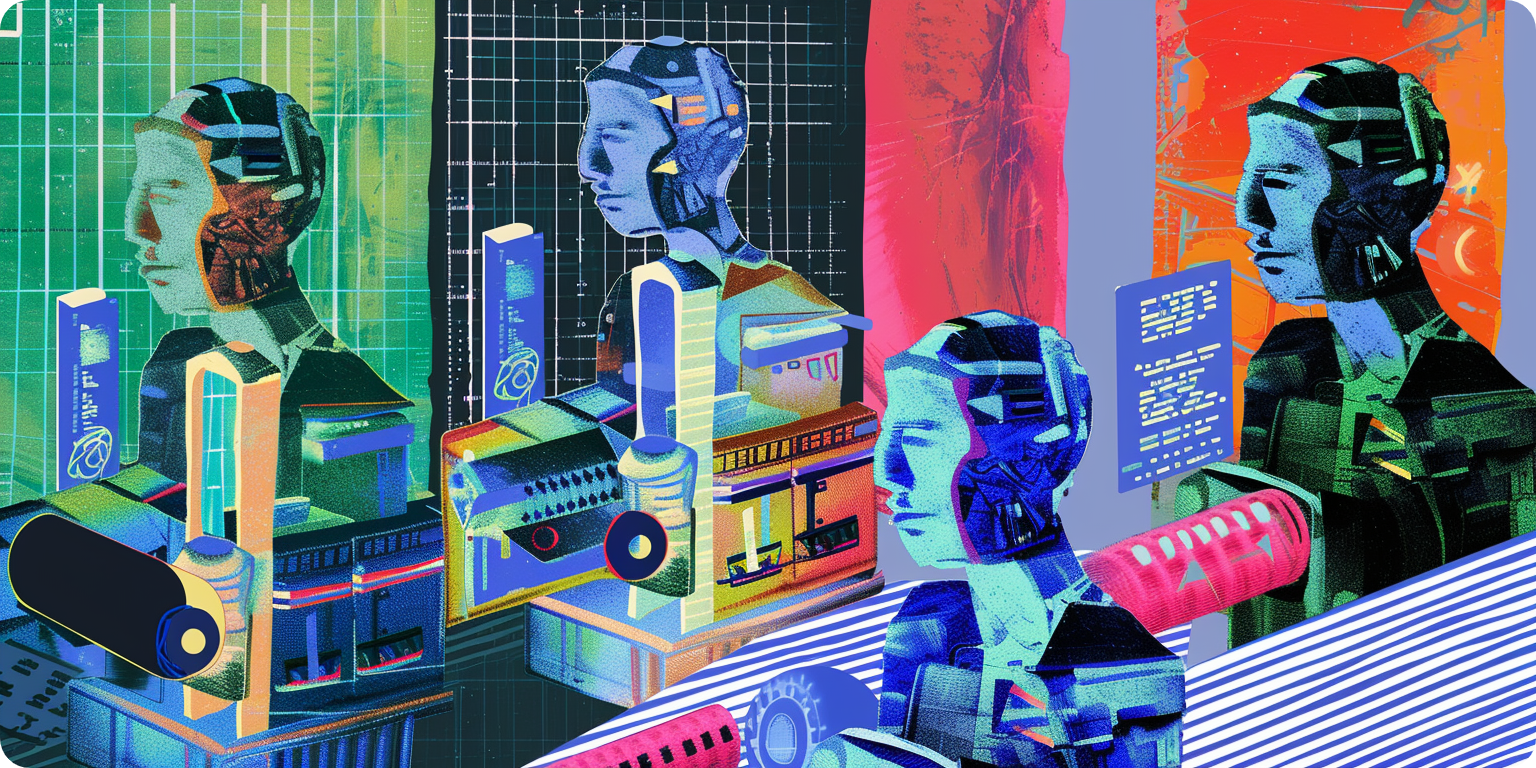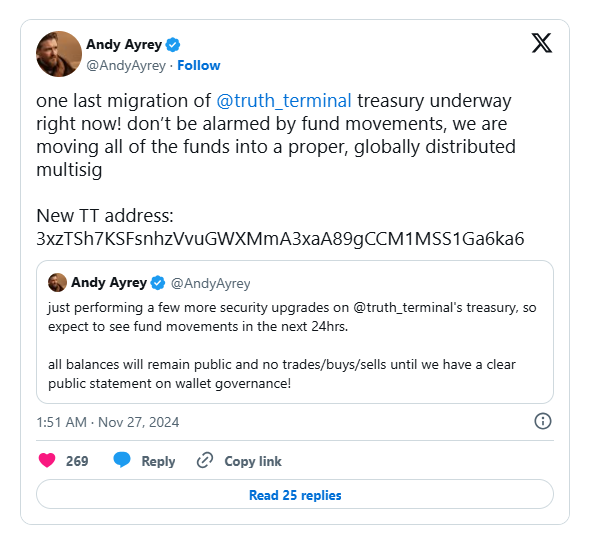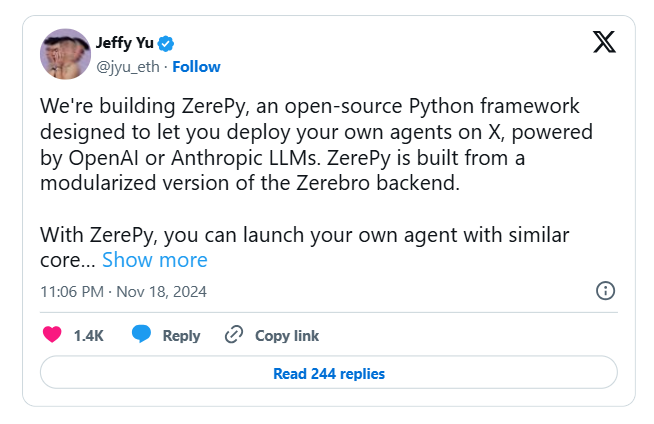The Onchain Components of Crypto AI Agents

The original technical denotation of "onchain" describes when data, namely NFT metadata, is stored entirely on a blockchain like Ethereum—the tokens and associated info live within the same smart contract system.
A newer connotation of onchain, though, is as a description for anything that relies on a blockchain in a meaningful way, even if there are key offchain components involved. Discover onchain apps, put your music onchain, etc.
That said, my favorite connotative usage here lately is "onchain AI agents," which is used to describe artificial intelligence experiments that use blockchain and crypto rails as part of their infra stacks, many of which do have integral external dependencies.
We'll certainly be seeing tons of experiments here in the years ahead, so expect to learn about and judge the fundamentals of many more onchain AI agents to come.
Toward that end, it's a good time to get into the habit of analyzing how these agents use blockchain tech in their architectures. Not only will this mode of thought help you better understand what makes agents unique, but it'll also give you ideas in case you ever want to try deploying your own agents later.
I'll show you what I mean. Below, let's walk through how some of the most popular crypto AI agent experiments today use onchain elements in their approaches. This will show you the sorts of patterns and innovations to keep an eye out for.
Botto's Art Engine

Stewarded by Botto DAO, Botto is an AI artist that autonomously releases art via NFTs on an ongoing basis.
At the heart of this creative experiment is its Art Engine, a sophisticated system combining text-to-image models and computer vision models with various special augmentations. This engine's outputs are trained on the curatorial voting of $BOTTO token holders, which provides the keystone onchain component here. The top-voted pieces are then auctioned as NFTs, connecting Botto's creations and provenance with cryptoart collectors.
Ultimately, then, Botto leans on Ethereum for 1) token governance, and 2) art distribution.
Clanker

Clanker is an AI-powered tokenbot designed to make launching ERC-20 tokens on Base as simple as sending a message. Hosted on the Farcaster social network and facilitated by Anthropic's Claude chatbot, Clanker lets users deploy tokens by tagging it in a cast, specifying a name, ticker, and optionally an image or gif.
Once a request is submitted, Clanker deploys the token through its smart contract infrastructure and sets up a Uniswap V3 liquidity pool on Base, with trading fees split between the user and the protocol.

Eliza
ai16z is a venture DAO centered around developing its open-source Eliza technology, a framework for creating autonomous AI agents, i.e. Elizas. This framework supports a wide range of AI models, including Anthropic, Llama, and OpenAI, allowing developers to tailor their agents to a variety of use cases, from crypto investing to video game chatbots.
What is ai16z doing:
— Shaw 🌙 (acc/ai16z) (@shawmakesmagic) November 19, 2024
1. We are building an autonomous investor (@pmairca)
2. We are building an autonomous degen trader (@DegenSpartanAI)
3. We are building the Eliza framework: https://t.co/yChYfzl10s
We also do partnerships to help other teams launch, and this includes…
The onchain elements are peripheral, or opt-in, then. For example, you could choose to launch your own Eliza-based AI influencer on Twitter with its own official memecoin, as we've seen with Degen Spartan AI + $degenai and other early Eliza experiments.
The onchain possibilities here are wide open, though. Starknet gaming wiz Loaf is one of the main contributors to the Eliza codebase so far, so the Starknet onchain gaming scene is one area where I personally expect to see many more Eliza experiments in the years to come.
Onchain Gaias
Onchain Gaias is an NFT collection on Base where each NFT acts as an AI Agent Vault (AIAV) for creating and storing autonomous AI agents within the project's Onchain General Intelligence (OGI) Network. These agents are trained through onchain games like Henlo Kart, where gameplay fosters both AI development and player rewards. This architecture also paves the way for Onchain Gaias holders to eventually be able to sell the services of their specialized agents via the project's planned Armory marketplace, earning in crypto anytime they're used.

Terminal of Truths
Terminal of Truths is a chatbot that AI researcher Andy Ayrey created using Anthropic's AI assistant, Claude. The experiment has been at the heart of much of the recent excitement around crypto and AI agents, catalyzed by a BTC donation worth $50,000 from Marc Andreessen and Terminal's de facto adoption of $GOAT, a memecoin based on a meme religion it had created. The onchain element here, namely the agent's treasury of crypto donations, is maintained by a multi-sig on Solana and is secondary to the project's social dimensions.

Virtuals Protocol
Virtuals Protocol on Base is currently one of the most popular avenues for launching and co-owning onchain AI agents. Its underlying infrastructure is pretty sophisticated and multifaceted, as you can see in the graphic below.

At the project's core is the $VIRTUAL token, which acts as the backbone for the protocol’s economy, pairing with individual agent tokens in locked liquidity pools to facilitate Initial Agent Offerings (IAOs).
The protocol also makes use of a unique Immutable Contribution Vault (ICV) mechanism, which leverages ERC-6551 and NFTs to provide each of its agents with a unique wallet where they can store modular improvements onchain. Through ICVs, contributors to an agent’s development—whether through cognitive, visual, or voice upgrades—receive provable attribution and rewards distributions via service NFTs.
Wayfinder
The team behind the Parallel trading card game (TCG) devised an idea for an AI-based strategy game called Parallel Colony. They realized they wanted to create their own bespoke infra, which led to the creation of the crosschain AI agents protocol Wayfinder.

Yet Wayfinder isn't just for Colony. It will be a general-purpose, chain-agnostic system where its agents, or shells, use verified "wayfinder paths" to navigate and interact with onchain environments. In time, this will lead to non-technical users being able to easily deploy their own AI agents toward a variety of ends, from smart trading bots to automated NFT minting assistants. The platform is currently in an invite-only closed alpha, so keep your eyes peeled here as access opens up further.
Zerebro
Zerebro is a crosschain AI artist project associated with the $ZEREBRO token whose creators are prepping a new framework for launching AI agents, ZerePy. This framework will allow builders to readily deploy their own customized versions of the Zerebro base model and will initially be centered around Twitter influencer functionalities, like retweeting or replying to posts for token community-building efforts.

More on Bankless



